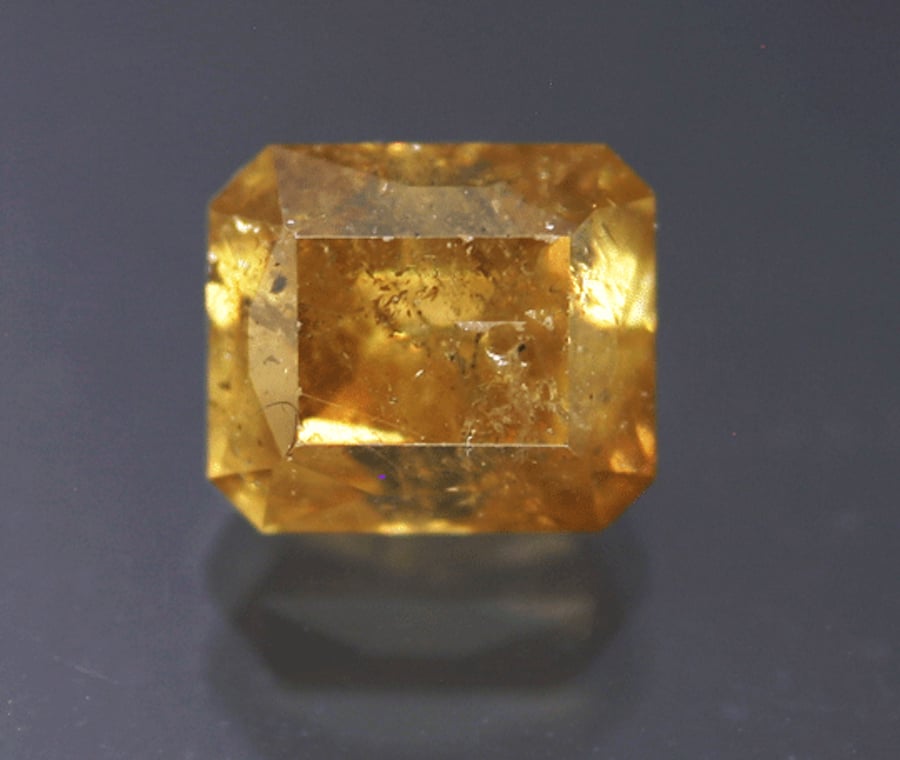Stibiotantalite Value, Price, and Jewelry Information
Rare stibiotantalite possesses an interesting mix of physical and optical properties that help distinguish it from other earth-toned gemstones. However, cut pieces over 2-3 carats rank among the rarest collector’s gems.
2 Minute Read
Rare stibiotantalite possesses an interesting mix of physical and optical properties that help distinguish it from other earth-toned gemstones. However, cut pieces over 2-3 carats rank among the rarest collector’s gems.
Start an IGS Membership today
for full access to our price guide (updated monthly).Stibiotantalite Value
What is Stibiotantalite?
Stibiotantalite belongs to the cervantite mineral group and forms a series with stibiocolumbite. If niobium (Nb) exceeds tantalum (Ta) in the mineral's composition, the result is stibiocolumbite. Stibiotantalite occurs when Ta exceeds Nb.
Distinguishing Stibiotantalite from Sphalerite
Stibiotantalites might be readily distinguished from other comparable gems. However, cut specimens strongly resemble more commonly encountered sphalerites. These gems share a range of earth-tone colors, including browns, yellows, reds, and even greens. Both can be transparent. Both have dispersion that exceeds the "fire" of diamond and very high, over the limit (OTL) refractive index (RI) ranges. They even share pyroelectric properties and can leave yellow streaks.
Nevertheless, some notable differences exist. Stibiotantalites have greater hardness. Polished sphalerites can have a higher, adamantine luster compared to stibiotantalite's resinous to vitreous appearance. More exceptionally, stibiotantalite has very strong birefringence, while sphalerites have none. This birefringence gives cut stibiotantalites a sleepy look due to the doubling of back facets as seen through the table.
Most exceptionally, stibiotantalites have far higher specific gravity (SG) values, 7.34 to 7.46, than sphalerites (and most other gemstones, for that matter).
So, if you find a very dense, pyroelectric, transparent, highly birefringent, and fiery earth-toned faceted gem, you might have a very rare stibiotantalite in hand.
Synthetics
Stibiotantalites have been synthesized. However, there is no known jewelry use for this material.
Enhancements
No known enhancements.
Where is Stibiotantalite Found?
Mozambique has produced most of the facetable stibiotantalite material. However, this source may be exhausted.
Other notable sources of gemmy crystals include Brazil and the United States, particularly San Diego County, California and Topsham, Maine.
The Wodgina district in Western Australia produces gem material as rolled pebbles.
Other gem sources include the following:
- Afghanistan; Myanmar; Pakistan; Kola Peninsula, Russia; Sri Lanka (gem gravels); Varuträsk, Sweden; Zimbabwe.
Stone Sizes
Stibiotantalites are fairly rare, and cut stones over 10 carats are virtually unknown. Transparent, facetable specimens are also extremely rare.
- Devonian Group (Calgary, Alberta, Canada): 4.65 (Brazil).
- Smithsonian Institution (Washington, DC): 7.3 (yellow, Brazil); 2.5 (brown, Mozambique).
Caring for Stibiotantalite Jewelry
You're more likely to find faceted stibiotantalites in gem collections than jewelry collections, if at all. Their hardness (5 to 5.5) makes them susceptible to scratches from everyday wear and other, more common jewelry stones. Therefore, reserve them for occasional wear and protective settings and store them separately from other pieces.
Due to their inclusions, avoid cleaning them in mechanical systems. Use a soft brush, mild detergent, and warm water, instead. See our jewelry cleaning guide for more recommendations.
Joel E. Arem, Ph.D., FGA
Dr. Joel E. Arem has more than 60 years of experience in the world of gems and minerals. After obtaining his Ph.D. in Mineralogy from Harvard University, he has published numerous books that are still among the most widely used references and guidebooks on crystals, gems and minerals in the world.
Co-founder and President of numerous organizations, Dr. Arem has enjoyed a lifelong career in mineralogy and gemology. He has been a Smithsonian scientist and Curator, a consultant to many well-known companies and institutions, and a prolific author and speaker. Although his main activities have been as a gem cutter and dealer, his focus has always been education. joelarem.com
International Gem Society
Related Articles
Black Diamond Value, Price, and Jewelry Information
Chameleon Diamond Value, Price, and Jewelry Information
Gray Diamond Value, Price, and Jewelry Information
Green Diamond Value, Price, and Jewelry Information
Latest Articles
Quartz Toxicity: Understanding the Risks for Jewelers and Wearers
Synthetic Amethyst: What is it and How is it Made?
Hambergite Value, Price, and Jewelry Information
Pearl Simulants: How to Spot Faux Pearls
Never Stop Learning
When you join the IGS community, you get trusted diamond & gemstone information when you need it.
Get Gemology Insights
Get started with the International Gem Society’s free guide to gemstone identification. Join our weekly newsletter & get a free copy of the Gem ID Checklist!
